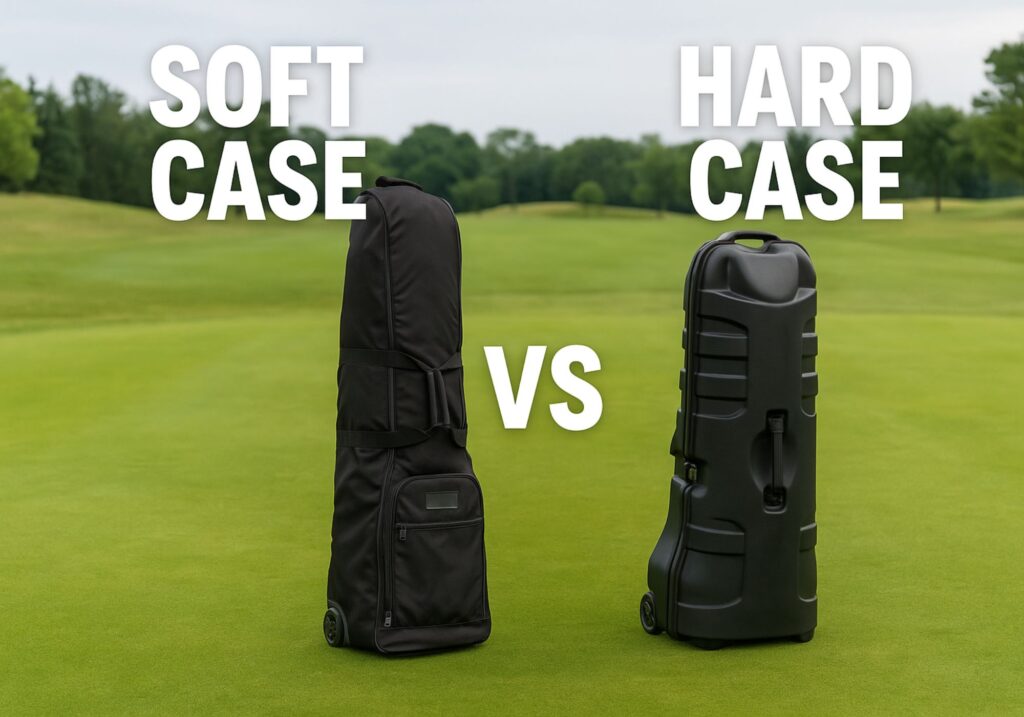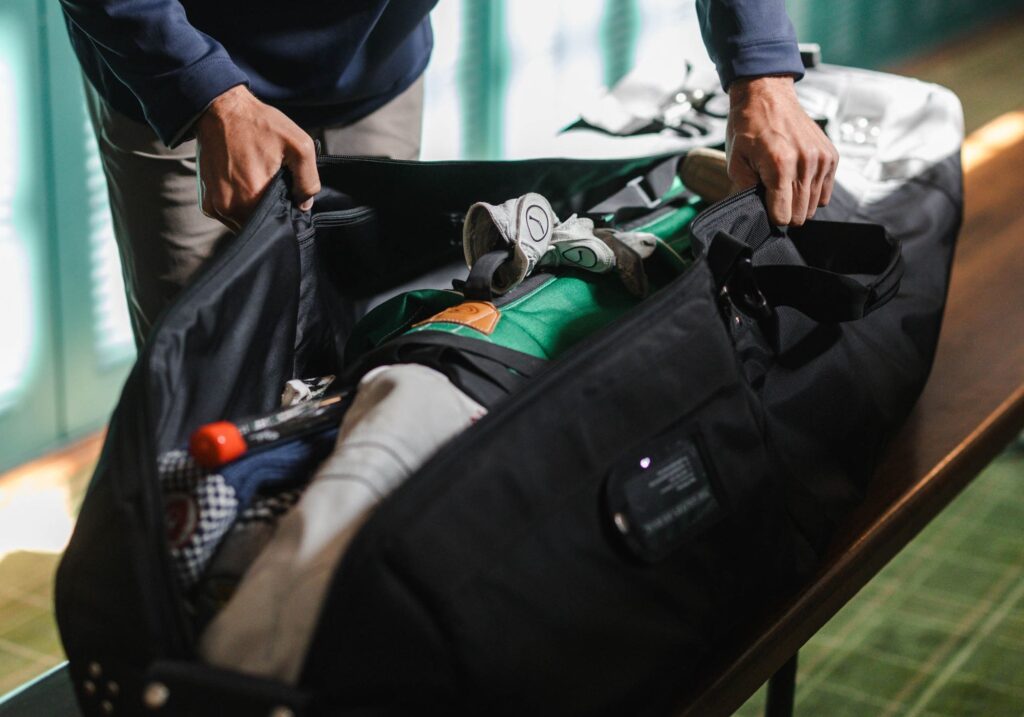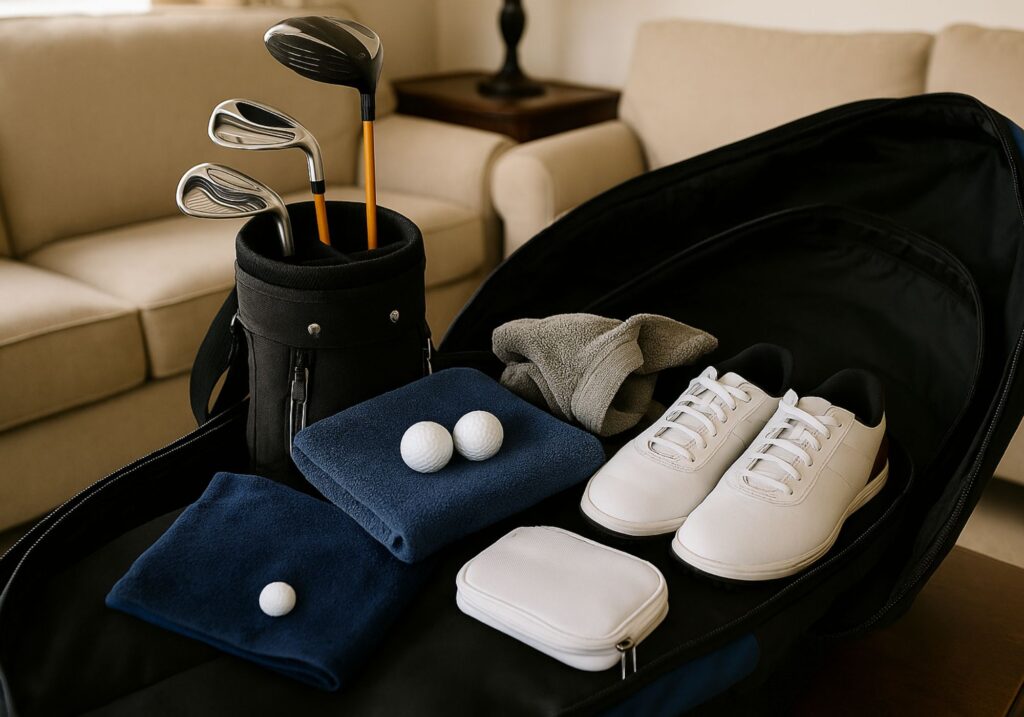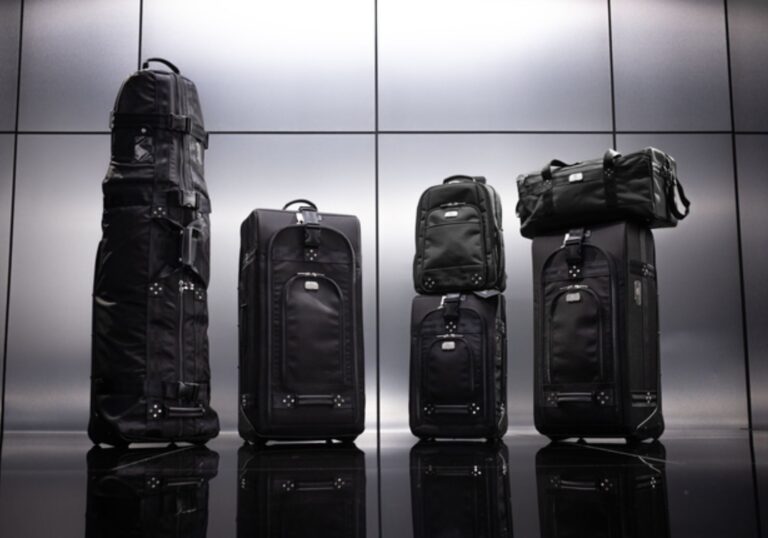Headed on a golf trip?
If any of these questions have crossed your mind, this article is for you:
- How do I keep my clubs safe when flying?
- Is it better to ship them or check them with the airline?
- What’s the best way to pack a golf travel bag without breaking something?
Let’s take the guesswork out of traveling with your golf gear.
Why you need a plan when traveling with golf clubs
Golf trips are often a highlight of the season. Maybe you’re heading to Pinehurst with your buddies, playing a bucket list course, or traveling for a work event. Either way, getting your clubs there safely can make or break the trip.
Airports, luggage handlers and long layovers don’t always mix well with a delicate set of clubs. A cracked driver, bent shaft, or lost bag is more common than you’d think. That’s why planning how to pack, transport and protect your gear is just as important as planning your tee times.
With the right setup, you can travel confidently and focus on your round, not whether your clubs made it in one piece.
Travel bags: soft vs hard cases

Before you even think about packing, you’ll need to decide what type of travel bag fits your needs.
Soft cases
These are the most common type used by recreational golfers. They’re lighter, easier to store and usually more affordable. Many soft cases, like those from Club Glove, have heavy-duty padding and durable fabrics that hold up well to regular travel.
However, they do rely on you packing smart. Using a stiff arm or a broomstick inside the bag can help protect the shafts. Wrapping clubheads with towels or extra shirts is a must.
Hard cases
If you want the maximum protection possible, a hard case is the way to go. Brands like SKB offer heavy-duty plastic shells that are nearly impossible to crush or puncture. These are ideal if you’re traveling with expensive clubs or want peace of mind. The tradeoff is size and weight as they’re bulkier, harder to store and sometimes subject to oversize luggage fees.
Hybrid options
Some companies now offer semi-rigid bags that combine the portability of soft covers with extra spine protection or internal framing. These can be a nice middle ground.
Look for features like:
- Smooth-rolling wheels
- Reinforced handles
- Lockable zippers
- Extra space for shoes, towels, and accessories
Tips for packing your golf clubs

You don’t need to be a pro to pack like one. A few smart steps can go a long way in keeping your clubs safe.
- Remove your driver and fairway heads and stash them in your carry-on. This prevents pressure from snapping the shafts and makes the bag shorter and easier to pack.
- Use socks or towels to cover your irons. No need for travel headcovers, just wrap them in soft materials to prevent clanking and scratches.
- Pack clubs heads-down if your bag allows it. It shifts weight away from the vulnerable shaft tips and gives the heads more padding.
- Stuff clothes inside the bag. A couple of polos, a golf towel, or even a hoodie can act as shock absorbers.
- Use a stiff arm. These telescoping rods extend above your longest club and take the brunt of any impact.
- Label everything. Your travel bag should have a visible tag with your name, number, email, and travel destination.
- Weigh your bag before heading to the airport. Most airlines have a 50 lb limit before charging extra.
And don’t forget to keep key gear—like your rangefinder, shoes, glove, and one outfit—in your carry-on just in case your checked bag gets delayed.
Airlines vs shipping services

When it comes to getting your clubs from point A to B, you’ve got two main options: check them with your airline or use a dedicated shipping service.
Airlines
Most major airlines allow golf bags as part of your standard checked luggage. The key is to stay within weight and size limits.
- Weight limits usually hover around 50 pounds. Go over and you’ll pay extra.
- Liability varies. Some airlines won’t cover damage unless your clubs are in a hard case.
- Direct flights help. Fewer connections mean fewer chances for your bag to go missing.
- Always keep your baggage claim ticket until you see your bag on the carousel.
Ship Sticks
A premium shipping service made specifically for golfers. They pick up your clubs from home, your club, or even the airport and deliver them directly to your destination.
- Includes tracking, insurance, and white-glove service
- Offers pickup windows and delivery guarantees
- Ideal for longer trips, high-end clubs, or convenience-focused travelers
Other shipping options
You can also ship through FedEx, UPS, or services like Luggage Forward. These tend to cost more and may not offer the same golf-specific packaging support as Ship Sticks.
If you’re playing a bucket-list course or going international, shipping ahead with insurance can give you peace of mind, especially if you’re taking a connecting flight or tight schedule.
Domestic vs international travel

Most of the basics apply in both situations, but international travel brings a few extra steps.
- Customs declarations. Some countries require forms if you’re bringing in high-value items.
- Longer lead time. If you’re shipping, allow for extra days in case of delays.
- TSA checks. Clubs may be inspected, so secure your bag with TSA-approved locks or zippers.
- Rental backups. If you’re concerned about delays, call ahead to your destination and confirm rental options in case your clubs don’t arrive on time.
Final travel checklist
Want to make sure nothing gets forgotten? Run through this list before you head out:
- Clubs are packed with towels, shirts, or socks for protection
- Driver and fairway heads removed and stored in carry-on
- Rangefinder, glove, and shoes packed separately
- Bag labeled with your contact info and hotel or course details
- Checked airline weight and size limits
- Confirmed baggage fees and rules
- Shipping timeline verified (if not flying with them)
- Backup clothing and essentials in your carry-on
Final thoughts
Traveling with golf clubs doesn’t have to be stressful. With a little preparation and the right travel bag, you can protect your gear, avoid last-minute surprises, and start your golf trip off the right way.
Whether you’re checking your bag on a flight, shipping with a service like Ship Sticks, or road-tripping with a soft case in the trunk, the goal is the same. Get your clubs there safely and enjoy your round.
The more you travel, the easier it becomes to know what works for you. Just don’t forget your glove. Or your shoes. Or your driver head.
Your turn
Do you fly with your clubs, ship them ahead, or take a different approach? Got any packing tips you swear by? Let us know what’s worked for you and help other golfers travel smarter.

1 Comment
I’ve used Shipsticks and they are terrific as long as you know exactly where your clubs are to be delivered–such as at a high end resort or private club, and allow plenty of advance time for delivery. Otherwise, when I do travel with my clubs–I don’t think it’s necessary to pack club heads in carryon–they travel just fine stuffed into their head covers in the large side garment pocket of most bags. I usually travel with two pairs of golf shoes in case of wet conditions, and again, at least one or both can fit in the golf travel bag (ClubGlove XL in fact has shoe pockets built in and IMO is the best travel bag made)